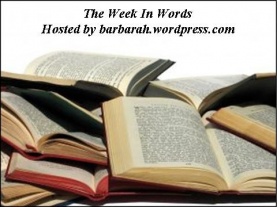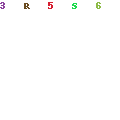I’m flying (er, floating) through the children’s picture book section of my library–and most recently I’ve been in the “BAR”s. There, I’ve found a few winners.
The Brambly Hedge Stories by Jill Barklem
Families of mice live their lives in Brambly Hedge, happily enjoying the busy work of the seasons.

While preparing a recitation for the Midwinter’s celebration at Old Oak Palace, Primrose and Wilfred find a secret passage that leads to an incredible hidey-hole and marvelous costumes that they unveil during their recitation.
Dusty and Poppy get married, Poppy in the fancy dress she’s been preparing for months, Dusty in his fancy duds, unfortunately dusted with a fine (or heavy) coat of flour. As the wedding guests dance, the ropes holding the wedding raft fast break, sending the raft and wedding party floating down the stream until they gently bump into a leafy clump.
All of Brambly hedge is busy making preparations for the day’s picnic–and they don’t even seem to remember that it’s Wilfred’s birthday. Wilfred, being a polite little mouse, doesn’t want to make a big deal of himself, but he is a bit disappointed. So he’s more than a little surprised when, after carting a heavy picnic basket to the picnic, he opens it to discover a cake and presents! Turns out, the picnic was a surprise birthday party for HIM!
Primrose goes off wandering and stumbles into a dark, cold tunnel. She explores it excitedly until she’s absolutely lost–and then she starts to get scared. The menacing figures with lights coming down the hall don’t help at all. She hides in fear until she notices a limp that gives the figure away–it’s her Grandpa out looking for her!
But my favorite Brambly Hedge story is The High Hills where Wilfred dreams of being an adventurous explorer in the High Hills. He gets his big chance when Mr. Apple schedules a trip to the High Hills to deliver some blankets to the needy Voles. Wilfred packs his adventurer’s bag and starts off. When he and Mr. Apple get lost, Wilfred has his adventure. He’s called upon to save the day–and safely deliver he and Mr. Apple back to Brambly Hedge. Wilfred is scared, but his preparations pay off.

The Brambly Hedge stories (I read Spring Story, Summer Story, Autumn Story, The Secret Staircase, and of course The High Hills) is a delightful collection of idyllic tales somewhat reminiscent of The Hobbit (although much shorter and less menacing). Illustrated in a manner directly reminiscent of Beatrix Potter, I absolutely adore these books!
Mr. Katapat’s Incredible Adventures by Barroux
Mr. Katapat, the hero, looks like an ordinary man–but really, he’s quite extraordinary. He experiences great adventures through the pages of books he’s found at the library.
He’s a fortune hunter, a time traveler, a sheriff in the Wild West, a detective, and much more.

He does all of his adventuring through the pages of books, which he reads as he does almost everything (including unicycling).
But one day, he stumbled onto a new adventure–an adventure he hadn’t read yet. A love story in real life.
That is how Mr. Katapat met Mrs. Katapat.
And that is a story I love to read.
Because by Mikhail Baryshnikov and Vladimir Radunsky
The narrator, who is known only as “me”, introduces us to his house, his friend, the neighbors in his apartment building, and his grandmother.
His grandmother, known as Mrs. Duncan, is an eternal embarrassment.

On Monday, she leapfrogs over Mrs. Q. On Tuesday, she rolls around on the ground. On Wednesday, she acts as if she were skating, only without the skates. On Thursday, she’s tap-dancing and doing cart-wheels. On Friday, she’s flapping her arms like a butterfly. On Saturday, she’s galloping. On Sunday, she’s leaping.
I aspire to be just like Mrs. Duncan.
Why?
Because she’s a dancer
 For more comments on children’s books, see the rest of my Reading My Library posts or check out Carrie’s blog Reading My Library, which chronicles her and her children’s trip through the children’s section of their local library.
For more comments on children’s books, see the rest of my Reading My Library posts or check out Carrie’s blog Reading My Library, which chronicles her and her children’s trip through the children’s section of their local library.











 Then the government decided to update the Pyramid–introducing the snazzy (and, in my humble opinion, less intuitive)
Then the government decided to update the Pyramid–introducing the snazzy (and, in my humble opinion, less intuitive) 




